Are you looking for more ways to enhance your search engine optimisation (SEO) strategy?
How on earth (or cyberspace!), are you supposed to keep ahead in such a competitive market? Stay one step ahead of the competition by directly targeting your demographic. True, this may be easier said than done. Though let’s look at a personal interest of mine, and its role in SEO.
What is semiotics?
Semiotics is the study of signs and how we perceive them. Signs include words, gestures, images, sounds and objects. Simple, right? Yet so many people overlook it, not only in digital marketing, but in marketing as a whole.
Semiotics begins with a signifier – a physical entry that can include: images, sounds and words. Even body language can be used to convey a meaning.
Following the signifier is the signified. For example, if the colour red is the signifier. The signified would be the connotation we take from reading the word red. This applies to our response at seeing the colour red too. Putting this into practice it would look a lot like this:
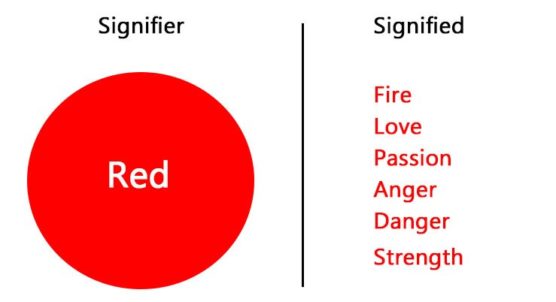
I am sure you can think of many more connotations for this colour, and are more than likely thinking: “How does this relate to my SEO strategy?”
Semiotics and Search
Semiotics applies to the process of the web-user clicking on a search result. The words generate certain connotations and expectations of what the landing page will offer. If either of these don’t match up, it will cause the user to bounce off the site and look elsewhere.
For example, a search for SEO delivers a web page for a marketing company that doesn’t have anything relevant to SEO on their site’s landing page…What would you do? You would leave, right? Possibly a little frustrated that the site has not lived up to your expectations.
Semiotics and Keywords
Keywords also play an imperative role in SEO. So, considering semiotics when choosing your keywords will make sure you are gaining the maximum reach for your website.
Tip: You can even apply this to your PPC campaigns, along with your hashtag choices for relevant social media platforms.
Next time you are picking keywords, don’t just think about dictionary definitions, but also the connotation that each word evokes. If you are running an eCommerce site, every product you are selling will have multiple connotations which you can utilise as keywords to maximise sales. You need your landing page to match the expectations of your target audience immediately!
Semiotics and Web Design
Web design relies on semiotics to attract its target audience; this is something you may already be doing subconsciously, but keeping semiotics in the front of your mind will help your website become more efficient.
You can implement a semiotic strategy to your web design by:

As you can see, research is key in all aspects of web design. I love this example of why researching font is so important:
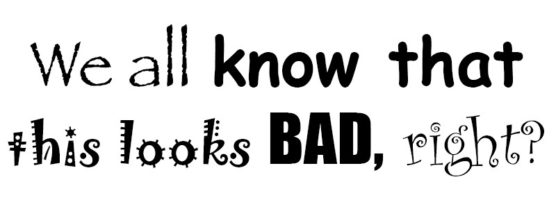
This would be perfectly suitable for a site aimed at children, but for a professional law firm? Think again.
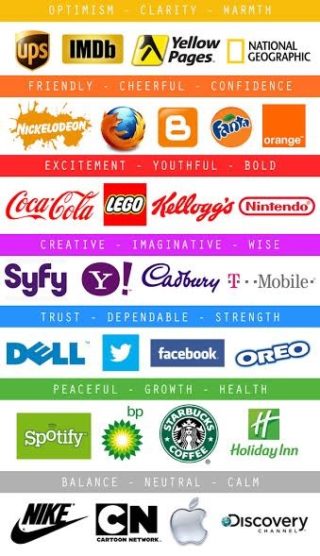 Equally, colour is extremely important to the success of presenting a site the way it is intended. As you may recall from the earlier semiotic example, colour carries many different meanings.
Equally, colour is extremely important to the success of presenting a site the way it is intended. As you may recall from the earlier semiotic example, colour carries many different meanings.
According to a survey by the University of Maryland, blue is the world’s most popular colour. The least? Yellow. Blue has connotations such as tranquility, calm, wisdom, loyalty, open space and the open sky – which is probably why it is so successful in design.
This explains the use of blue on successful social websites, that aim to appeal to all internet users like Facebook and Twitter.
What can semiotics do for your website?
Your company’s website should always have usability at the forefront of its customer journey. Take Twitter as an example, when Twitter launched it looked drastically different to what it looks like today:
Twitter Launch 2006: 
Twitter Current 2017:
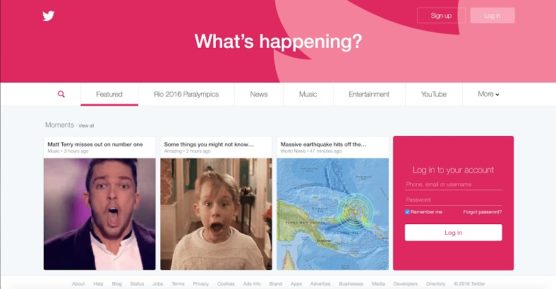
Twitter has remained consistent in usability, even from their first launch you can clearly see what the site is for and how to use it. From a semiotic point of view, the first launch layout looks simplistic. It lacks imagery and appears dull to the eye, a stark contrast to its modern and approachable design today. Obviously, the internet has evolved since 2006, so the comparisons here may seem a little unfair.
It’s interesting to see how Twitter has adapted to these changes, implementing a strategy to attract their target demographic. This makes Twitter a great example for how websites must keep content fresh and up to date, in line with current trends.
Twitter’s current site now looks professional and engaging whilst keeping the layout simplistic. One thing I have noticed is Twitter no longer displays the site’s intentions, implying the user already knows what the site does before hitting the landing page. Twitter foregoes a site description on its landing page due to becoming a well-known social media platform with 317 million monthly active users. Today, you would struggle to find someone who has little previous knowledge of Twitter.
When designing your website, visual content should directly relate to the users’ expectation of what the site is about. Be careful not to presume the viewer will understand what your site is about by design alone. Back up the design with text to make sure everything is signifying the correct message.
Semiotics and content optimisation
‘Content is king’ an expression of high favour amongst SEO specialists and rightly so, great content is the perfect way of attracting traffic towards your website and bumping up your SEO strategies.
“How do I get them in?” you may be asking… By thinking about your audience, that’s how! Adapt your content not only to your demographic but also to the different platforms you use to share it.
Take what we have previously addressed in this post about using semiotics and apply it to your content marketing strategy. When you are drafting out that killer blog post or classy infographic think; “What is my content signifying and how are people going to interpret it?” Make sure your technical SEO strategy compliments what you have written rather than dominating it, don’t make the dreaded mistake of keyword cramming!
Pay attention not to overuse a keyword for the sake of getting it in there. Over using keywords can look spammy and unprofessional, a keyword should fit into your site not dominate it.
Semiotics and Content optimisation – for sharing on social media:
You have finished that blog at last and are looking to share it on social media. You obviously can’t just copy and paste the blog text you need to link to your post. Posting plain links can look boring, how are you going to make sure it’s eye catching and fitting to each platform? Semiotics is your best friend here.
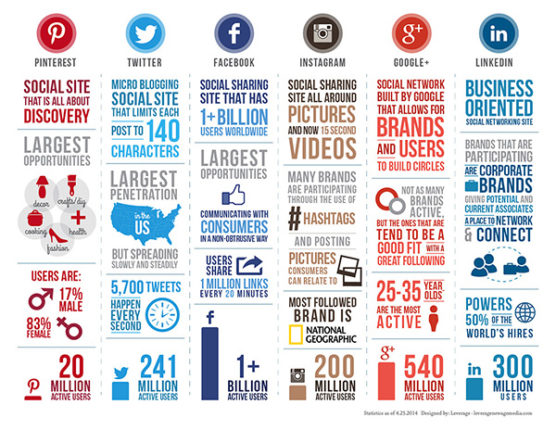
Users of each social platform have their own expectations of what content they are going to see. Each social media platform has a different unwritten agenda and semiotic connotation that influence what’s posted, for example:
- Twitter is mainly a news platform.
- Facebook, a social hangout (used by companies to build up relations with potential customers).
- LinkedIn for Industry professionals to connect with one another.
- Instagram, a visual marketing tool and personal scrapbook.
When posting the link to your blog keep in mind the social site you’re posting on, and what content is most appropriate for that platform. You can then choose to use images clearly connected with or related to the post, perhaps even create a bold infographic or chart that gives visual information to help you boost engagement.
Wrapping things up
Getting your psychological hat on can have impactful advantages when communicating with the core of your target audience and, ultimately, what they truly want or require from your site.
Semiotics is an interesting alternative way to approach web design, search engine optimisation, and content creation. Considering semiotics in all these areas will really help you reach your target demographic.
Consider semiotics for:
Search – Make sure your landing page contains the semiotic elements to match the search intent.
Keywords – Keywords should match products and services that your website is providing, along with user connotations.
Designing and optimising your website – The visual signs the site gives should match both the text and the users expectations.
Optimising content both for your site and social media – Making sure your content looks great and matches the networks you are sharing on, along with appealing to your target demographic.
This obviously isn’t the answer to all your SEO queries, but it should help you develop the best strategy to capture your target demographic. If you enjoyed learning about semiotics in the digital marketing world and want learn more I highly recommended Semiotics The Basics by Daniel Chandler. Comment below if you have any fun tips on approaching your SEO strategy.


